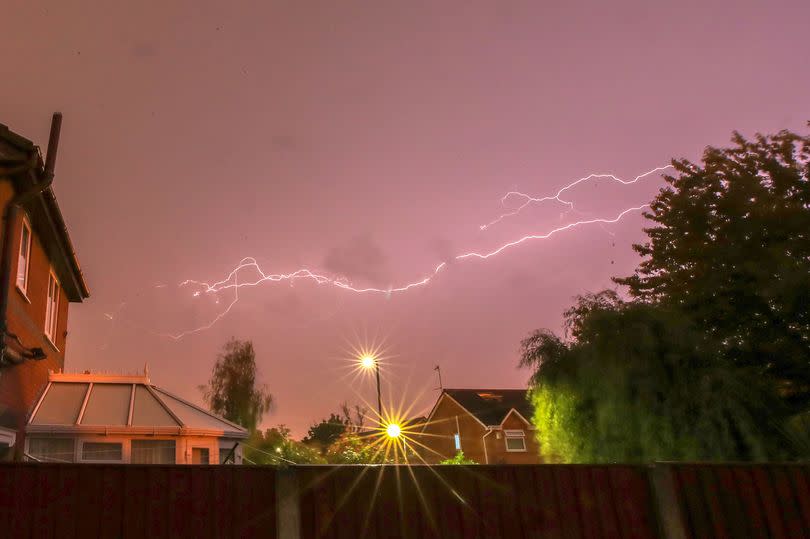Met Office weather warning for thunderstorms tonight and tomorrow in Essex which could lead to flooding

Essex could be battered by thunderstorms tonight as the Met Office has issued a weather warning. The yellow warning covers all of Essex, London and other parts of the south east of England.
The Met Office said that thunderstorms are "likely" for this evening in parts of the county and have advised some roads could flood, and people could face disruptions if travelling. The warning is in place from 11pm this evening (May 1) to 6am tomorrow (May 2).
There could be spray and sudden flooding could lead to difficult driving conditions and some road closures. Where flooding or lightning strikes occur, there is a chance of delays and some cancellations to train and bus services.
Read more: Man arrested after dangerous dog made 'threats to kill' as police officer is attacked
Also read: EasyJet chaos as airline wrongly tells Stansted Airport passengers flights are cancelled
The Met Office said there is a slight chance that power cuts could occur and other services to some homes and businesses could be lost. There is also a small chance that homes and businesses could be flooded quickly, with damage to some buildings from floodwater, lightning strikes, hail or strong winds.
The Met has issued the following advice for staying safe in a thunderstorm:
1. Could your property be at risk of flooding
Follow this three-point plan to check and be prepared:
Check if your property is at risk.
If you are at risk, take the next two steps to protect your property when you need to:
Prepare a flood plan
Prepare an emergency flood kit
2. Staying safe in flooding
It's never too late to take action and prepare for flooding. Follow these 6 simple steps to protect your home or business:
Check the flood advice in your area to know when and where flooding will happen
Charge mobile phone devices
Park your car outside the flood zone
Prepare a flood kit to help you cope in the event of flooding to your home and business
Store valuables up high, including electrical devices, important documents and furniture
Turn off gas water and electricity supplies
If you are trapped in a building by floodwater, follow these simple instructions to keep you and your family safe:
Go to the highest level in the building you are in
Do not go into attic spaces to avoid being trapped by rising water
Only go to a roof if necessary
Call 999 and wait for help
3. Is it safe for you to drive?
It is safer not to drive in thunderstorms but if you must drive you can do this more safely by:
Slowing down
Using main roads
Using dipped headlights
Giving yourself more time to react on slippery surfaces
Keeping a bigger gap between vehicles
What about flood water?
It is not safe to drive or walk or swim through floodwater, avoid it where possible and if you are affected by fast flowing or deep water call 999 and wait for help.
4. What you can do in a powercut
People cope better with power cuts when they have prepared for them in advance and it's easy to do. The essentials that could help you cope with a power cut are:
candles and matches or lighters,
torches and batteries,
a mobile phone power pack
If your power goes out these simple steps can help you deal with the situation:
Switch off all electrical appliances that shouldn’t be left unattended, ready for when the power comes back on.
Leave a light on, so you know when the power cut has been fixed.
Check to see if your neighbours are safe and if they have a power cut too. If they have power, your trip switch may have activated.
If it's cold, wrap up warm and close internal doors to keep the heat in.
Portable heaters are a good alternative if heating systems are down.
Call 105 for information, it’s a free service for people in England, Scotland and Wales.
5. Protecting your property from damage and other people from injury
Don't risk injury to others or damage to your property. Check for loose items outside your home and plan how you could secure them in high winds.
Items include:
bins
plant pots
garden furniture (bring inside or secure in place)
trampolines (turn upside down or secure with tent pegs)
sheds (ensure doors are locked)
Don't go outside to repair any damage during the storm.

 Yahoo News
Yahoo News 
